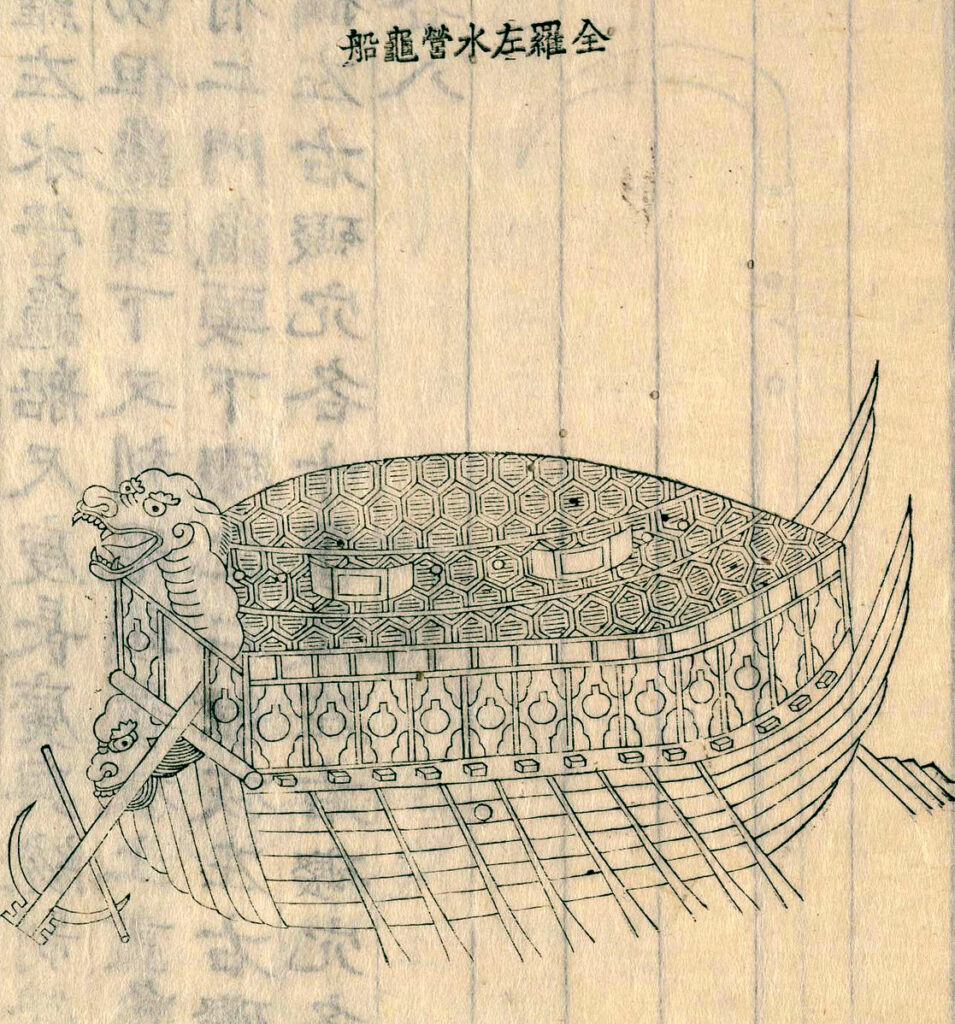The Enduring Legacy of Korean Turtle Ships: Naval Innovations and Historical Impact
The Origins and Development of Turtle Ships
The Korean turtle ships, or geobukseon (거북선), are renowned for their unique design and innovative contributions to naval warfare. Developed during the late 16th century, these ships were pivotal in the Korean resistance against Japanese invasions during the Imjin War (1592–1598).
Historical Background
The turtle ships were introduced by Admiral Yi Sun-sin, a celebrated Korean naval commander. Yi Sun-sin’s strategic acumen and his drive to protect the Korean peninsula led to the creation of these armored vessels. Their development was not a singular event but a culmination of years of maritime warfare experience and experimentation.
Design and Construction
The turtle ships were distinctive for their iron-clad shell and spiked roof, which were designed to deflect cannonballs and prevent boarding. These ships were equipped with multiple layers of armor, including metal plating and wood, providing robust protection against enemy fire. Their innovative design also included dragon-head turrets that could shoot arrows and flaming projectiles, enhancing their offensive capabilities.
- Armored Shell: Protected against cannon fire and enemy attacks.
- Spiked Roof: Prevented boarding by enemy troops.
- Dragon-head Turrets: Equipped with various weapons for both offense and defense.
Tactical Advantages and Innovations
The turtle ships were revolutionary in their design and functionality, making them formidable opponents in naval battles.
Naval Warfare Strategies

The introduction of turtle ships altered the dynamics of naval warfare. Unlike traditional ships, turtle ships could withstand intense bombardment and deliver devastating attacks. Their design allowed for more strategic maneuvering and effective defense.
Key Tactics
- Encirclement and Attack: Turtle ships often used their superior firepower to encircle and incapacitate enemy vessels.
- Fire Arrows and Cannons: The combination of fire arrows and cannons provided a dual-threat to enemies, disrupting their formations and causing chaos.
Technological Innovations
The turtle ships were equipped with several cutting-edge technologies of their time. The iron-clad armor was particularly significant, as it provided unprecedented protection against the cannon fire prevalent during that period. The rotating turrets allowed for versatile attacks and improved accuracy in combat.
The Role of Turtle Ships in Key Battles
The turtle ships played a crucial role in several decisive battles during the Imjin War, demonstrating their effectiveness and strategic value.
The Battle of Myeongnyang
During the Battle of Myeongnyang (1597), Admiral Yi Sun-sin commanded a small fleet of turtle ships against a much larger Japanese force. The turtle ships’ superior maneuverability and defensive capabilities were instrumental in the Korean victory. Yi Sun-sin’s strategic use of the turtle ships helped to secure a decisive win, showcasing their effectiveness in asymmetrical warfare.
The Battle of Hansan Island
The Battle of Hansan Island (1592) was another significant engagement where the turtle ships played a pivotal role. The Korean fleet, including turtle ships, executed a successful ambush against the Japanese navy, which was trapped and decimated. The battle demonstrated the turtle ships’ capacity for offensive and defensive operations in real-world conditions.
The Decline and Legacy of Turtle Ships
Despite their initial success, the turtle ships eventually saw a decline due to several factors.
Reasons for Decline
The advancement of naval technology and changes in military tactics contributed to the decline of the turtle ships. As new types of warfare emerged, the turtle ships became less effective compared to more modern designs. Additionally, the resources required for maintaining and constructing these ships were considerable.
Historical Legacy
Although the turtle ships eventually fell out of use, their legacy endures. They represented a significant technological advancement in naval warfare and inspired future ship designs. The innovative features of the turtle ships paved the way for modern armored naval vessels.
Turtle Ships in Modern Culture and Media
The legacy of the turtle ships extends beyond historical accounts into modern culture.
Depictions in Media
Turtle ships have been featured in various films, literature, and artworks. They are often depicted as symbols of Korean resilience and ingenuity. Their representation in media helps to keep the memory of these remarkable vessels alive and introduces them to new audiences.
Educational and Memorial Efforts
Several museums and educational programs highlight the history and significance of the turtle ships. These efforts include exhibits, interactive displays, and educational workshops designed to inform the public about the turtle ships’ impact on naval history.
Comparative Analysis: Turtle Ships vs. Other Historical Ships
Comparing the turtle ships with other historical naval vessels provides insight into their unique contributions.
Comparison with European Naval Innovations
European naval innovations of the time, such as the galleons and armored ships, had different design philosophies compared to the turtle ships. While European ships focused on firepower and maneuverability, the turtle ships emphasized defensive capabilities and protection. This comparison highlights the turtle ships’ distinctive approach to naval warfare.
Impact on Naval Warfare Globally
The design and strategies used in the turtle ships influenced naval tactics beyond Korea. Their innovative features were studied and adapted by other cultures, contributing to the evolution of naval technology worldwide.
Research and Further Reading
For those interested in exploring the topic further, numerous sources provide in-depth information on turtle ships and their historical context.
Key Sources and References
- “The Korean Turtle Ship: An Innovation in Naval Warfare” by [Author Name]
- “Yi Sun-sin: The Korean Admiral Who Defeated Japan” by [Author Name]
- Academic journals and articles on naval history and technology
Ongoing Research and Discoveries
Current research continues to uncover new details about the turtle ships. Archaeological findings and historical studies provide fresh insights into their construction and use.
Meta Description: Explore the enduring legacy of Korean turtle ships, their design innovations, key battles, and impact on naval history. Discover their unique contributions to warfare.
Summary of Admiral Yi Sun-sin
| Aspect | Details |
|---|---|
| Name | Yi Sun-sin |
| Born | April 28, 1545 |
| Died | December 16, 1598 |
| Role | Korean naval commander and strategist |
| Notable Achievements | Defeated Japanese forces in the Imjin War using turtle ships |
| Legacy | Renowned for his innovative naval tactics and the development of turtle ships |
References:
- History Defined – Korean Turtle Ships
https://www.historydefined.net/korean-turtle-ships/






